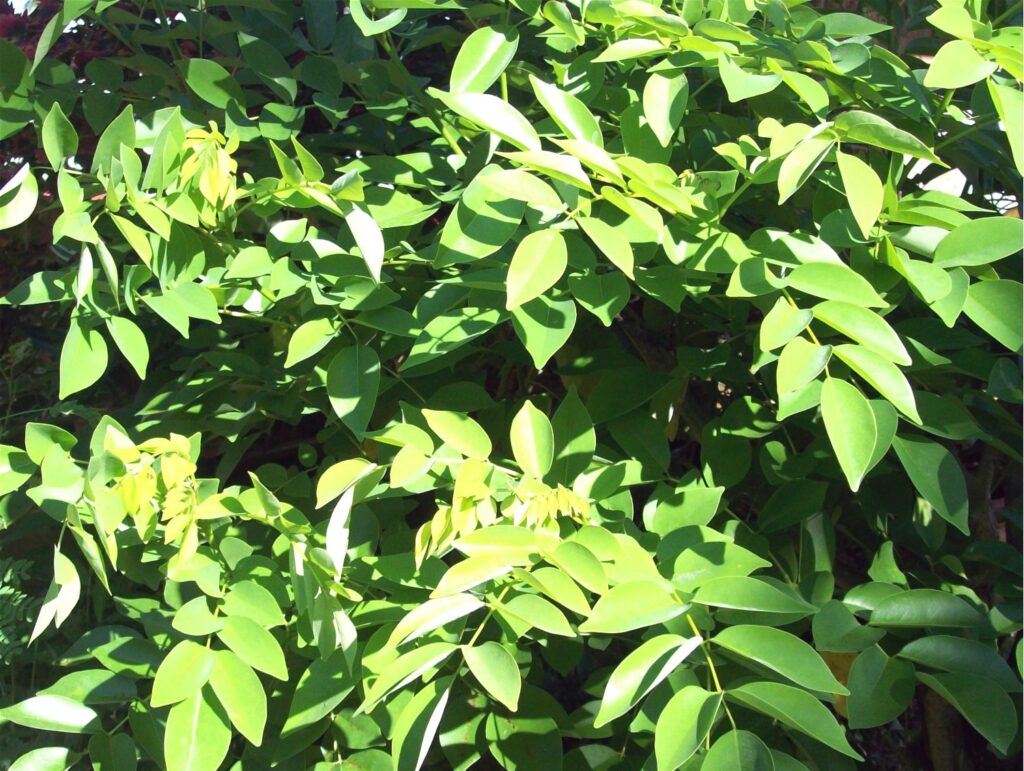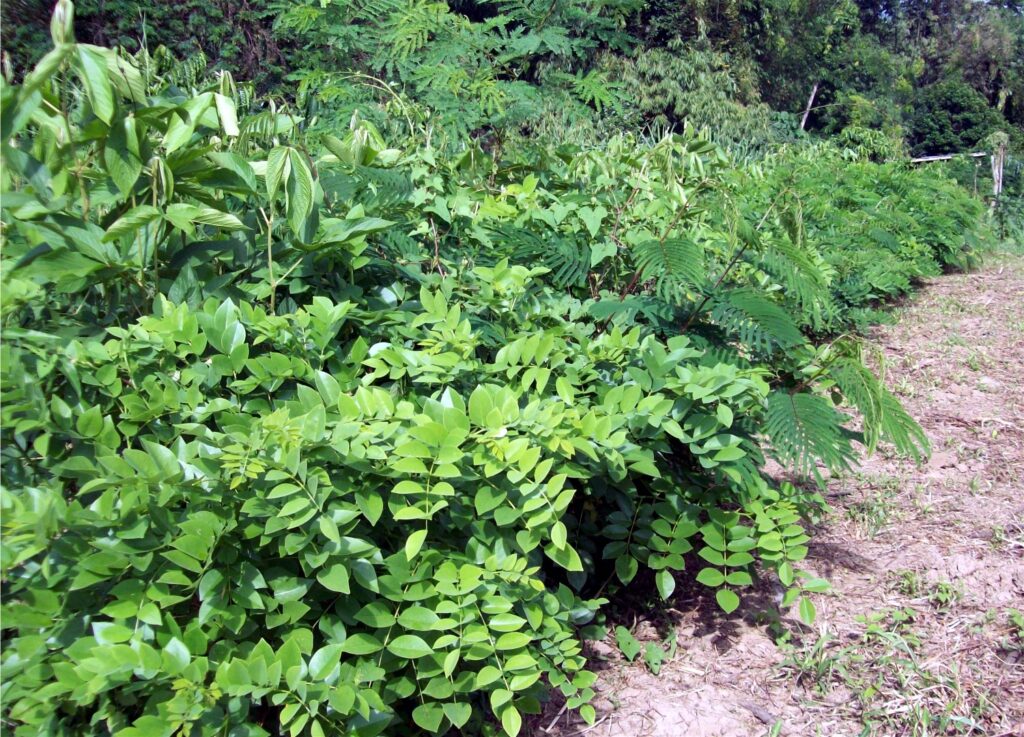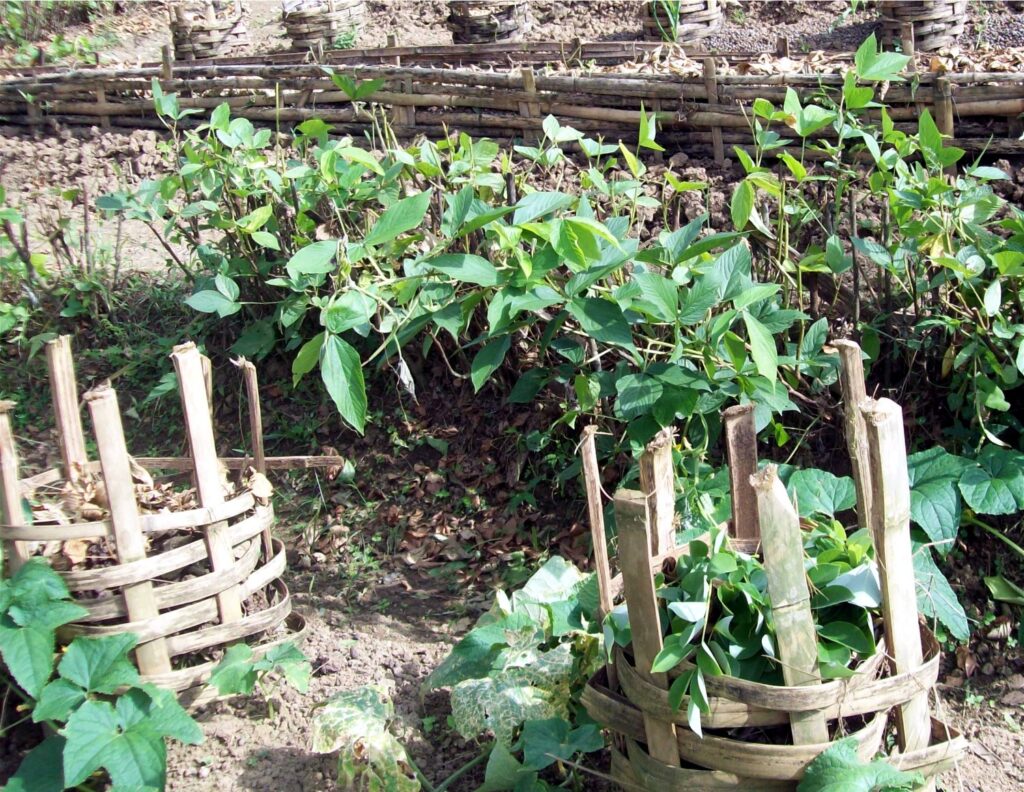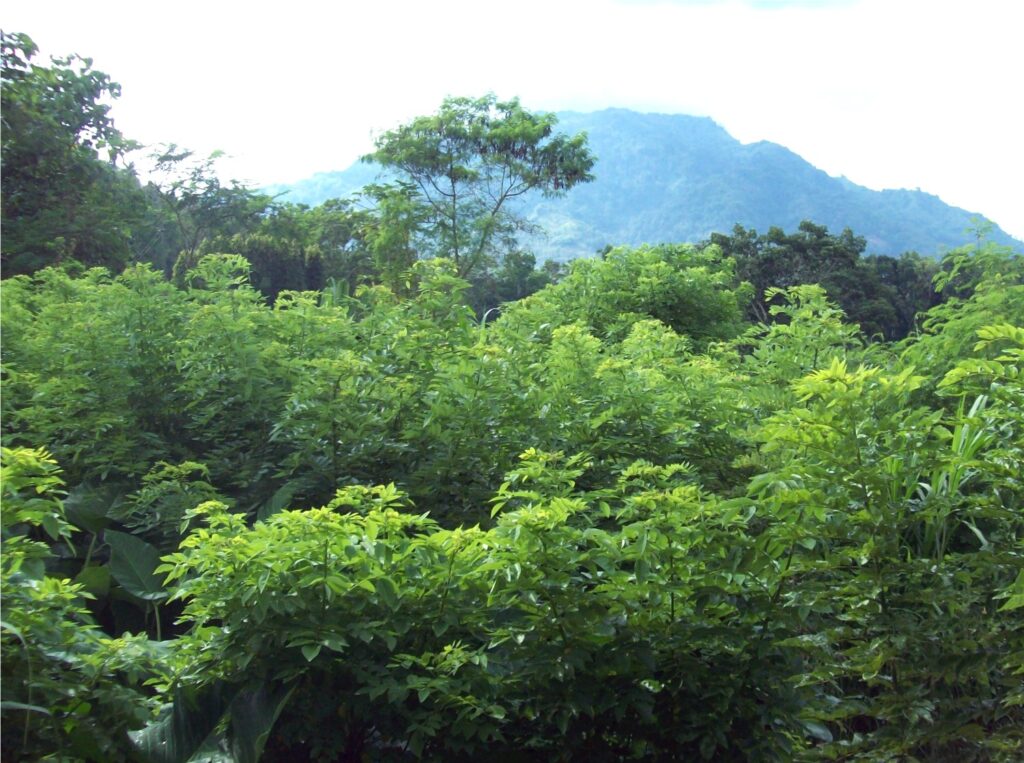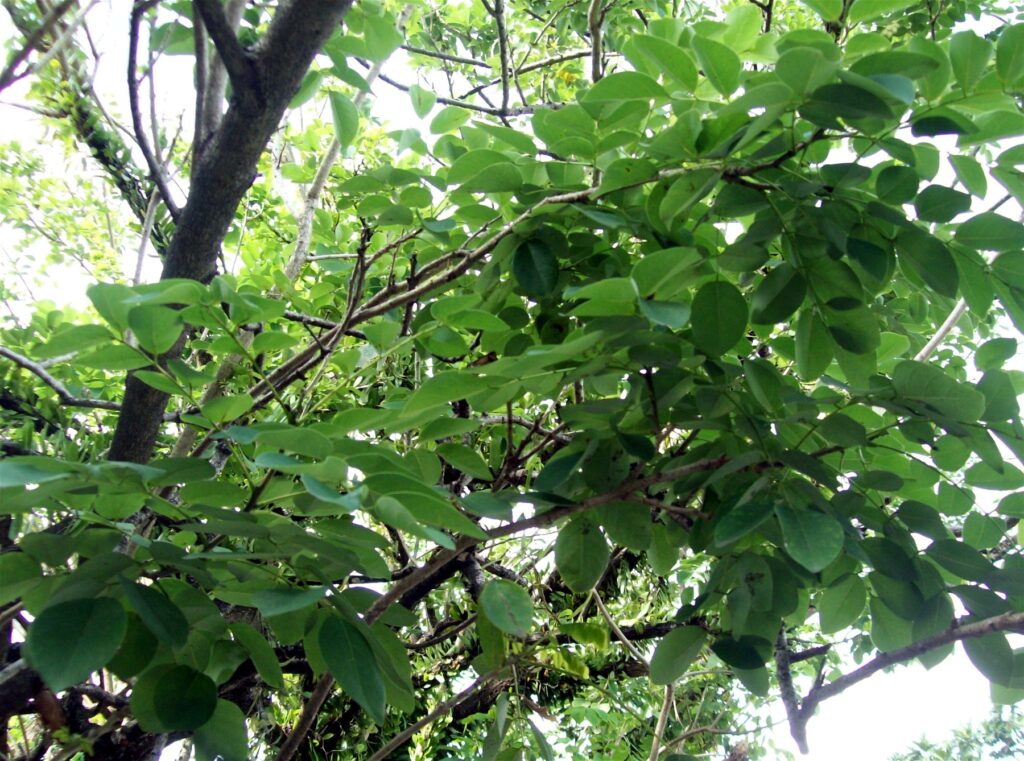Text and Photos by Henrylito D. Tacio
If there’s a tree that should earn the sobriquet “wonder,” it should be the fast-growing “madre de cacao” or more commonly known as kakawate. In fact, that is how Dr. Edwin C. Villar called it in an article he wrote for The PCARRD Monitor.
“The wonder of kakawate lies in its multipurpose uses. It is used as a live fence to surround property boundaries, as shade tree, wind break, and more importantly as a feed resource for livestock raisers,” wrote Villar in the publication published by the Philippine Council for Agriculture, Forestry, and Natural Resources Research and Development.
Kakawate (known in the science world as Gliricidia sepium) is a leguminous tropical tree that grows mostly in forests and could grow from five to ten meters tall. Although native to Central America, it has been naturalized everywhere, including the Philippines, because of its adaptability to any type of condition.
Because it is easily propagated and grows quickly, it has been suggested that kakawate may be planted to reduce topsoil erosion in the initial stages of reforesting denuded areas, an intermediate step to be taken before introducing species that take longer to grow.
“The tree could re-sprout very quickly after pruning,” wrote Rita T. dela Cruz in an article circulated by the Bureau of Agricultural Research, a line agency of the Department of Agriculture. “Many farmers plant them mainly to shade other perennial crops like cacao, coffee and tea.”
But more than this, kakawate could provide a lot of uses to the farmers from its roots to its leaves. To innovative farmers, the leaves of kakawate are used as fertilizer (green manure) in fields and gardens.
At the Mindanao Baptist Rural Life Center (MBRLC) in Kinuskusan, Bansalan, Davao del Sur, they use the leaves of kakawate along with other household “garbage” (like peelings of squash, upo, pineapple, etc.) to serve as compost materials in their gardening technology called Food Always In The Home (FAITH). Also, kakawate posts are utilized as trellis for string beans, ampalaya, and black pepper.
As a leguminous species, perennial kakawate could improve and enrich soil conditions through fixation of atmospheric nitrogen, addition of organic matter through dead or decaying roots, and modification of soil porosity. Planting kakawate is a good way of restoring the fertility of denuded farms.
Indigenous knowledge also indicates that kakawate has a broad spectrum of uses against pests and as an herbal medicine both for humans and animals.
Fresh leaves applied to the skin are used as insect repellent. Sap of bark, leaves and roots have been used for wound healing. A medical study has shown that kakawate preparation is as effective as sulfur lotion in the treatment of scabies.
The United Nations Food and Agriculture Organization (FAO) reports that kakawate leaves contain coumarin, which can be converted into an anticoagulant “discoumerol” found to be an efficient rat killer.
“Anticoagulants are an efficient natural method of pest control because they reduce the protein prothrombin, a clotting agent secreted in the liver, and eventually cause death from internal bleeding,” the FAO noted.
Tests have shown that while the toxin produced by kakawate does not act rapidly, repeated doses lead to fatal hemorrhaging within a few days. “Unlike many other poisons, anticoagulants do not produce bait shyness, which rodents tend to acquire as soon as the first victims of other poisons are taken,” the FAO said.
Aside from rodents, kakawate also acts potently on insects. In many countries, its leaves are placed in chicken runs, or left to soak in hot water and used to eliminate fleas and lice on domestic animals.
In Ilocos region, a study made by the Mariano Marcos State University found out that kakawate leaves can be used to control diseases that attack garlic like purple blotch and bulb rot. To prepare the concoction, the leaves are pounded using mortar and pestle. After that, one liter of water is added to a kilogram of pounded kakawate leaves. The mixture is filtered being sprayed to the plants infested by pests.
In Science City of Muñoz, organic rice farmers sprayed their crops with fermented leaves and twigs of kakawate and neem trees to control pests and diseases. Some farmers found it convenient and effective, too, to just allow the kakawate leaves to drift to their farm when they irrigate.
In Baguio, a botanical pesticide prepared from kakawate leaves and other herbs are used to fight against worms that attack cabbage and broccoli like cabbage butterflies, diamondback moths, leafminers, and inchworms.
According to farmer-trainer Michael Bengwayan, the botanical insecticide is prepared using half drum of water, wild sunflower shoots, kakawate leaves, and cigarette butts. One sack of sunflower shoots and kakawate leaves are gathered. The sack is tied up so the leaves would not come out of the sack. Then the sack is immersed in the drum filled with one half drum of water. Also immersed in the water are about 100 cigarette butts. A heavy stone is placed on top of the sack to prevent the materials from floating. The drum is then covered.
The materials are left to rot for two weeks. After that, the drum is opened and the water with the decomposed decoction is allowed to pass through a screen and sieved to remove the substrates and decomposed leaf tissues. A fine mesh cloth is used to finally filter the water. One liter of this solution is mixed with 15 liters of water. Now, it is ready for spraying.
“This is our effective, simple and inexpensive control for worms and larvae,” Bengwayan wrote. “Our warning though, the only disadvantage is that the decoction smells and the applicator should cover all his body and face to prevent the smell from sticking to his skin. But the extract is safe when in contact with the skin.”
Kakawate serves as an excellent feed for livestock. The leaves have a dry matter (DM) digestibility of 56%-68% crude protein (16%-18%), crude fiber (21%), and phosphorus (0.13%), and carotene.
Animals fed with kakawate leaves for the first time find the herbage unpalatable because it contains anti-nutritional agents: 1%-3.5% flavonol and 3%-5% total phenol on DM basis. “Once the animals get used to the distinct odor of the fodder leaves,” Villar said, “the feed intake is improved, especially if mixed with leaves of other species.”
At the MBRLC, dairy goats are fed with 20% kakawate in combination with 50% Desmodium rensonii, 25% Flemingia macrophylla, and 5% napier grass. “But we also provide our goats concentrates to let them produce milk,” adds Roy C. Alimoane, the MBRLC director.
Studies conducted at the University of the Philippines at Los Baños showed that when banana bunches are stacked with kakawate leaves, the fruits ripen quickly. The reason: kakawate leaves emit bioethylene, a gas that ripens fruits. Another advantage is that bananas ripened with kakawate leaves lose only five percent of their weight while those not treated lose 19 percent of their weight within six days.
“The versatility of a tree can be measured by its wide array of uses,” Villar pointed out. “Kakawate is well-adapted to humid areas and acidic, infertile soil. It suits well to varied production systems and can be grown easily together with other grasses or herbaceous legumes.” — ###
